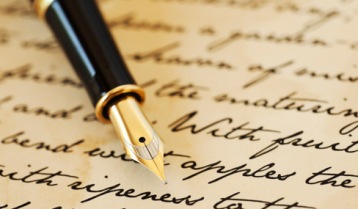All our small children get on brilliantly with us and each individual other – it’s like a desire arrive genuine!The dates are now frequent and we are going from energy to toughness as our partnership builds additional in the direction of a new chapter in our life. Expert Profile Assistance. Putting jointly a first course profile is a truly significant component of online dating. It really is also a great option to express you and flex your imaginative flair. Having said that, picking the proper words and phrases or getting that best photo. can from time to time be a little tricky.
We offer you a host of specialist recommendations on what to write and how to glimpse. Conveying what makes you one of a kind shouldn’t be a chore, and which is why we’re joyful to aid!Meet Singles – Authentic, Skilled Men and women. Not only are the the vast majority of our users educated and prosperous, one specialists aged thirty-fifty five, but they are all fully commited to finding legitimate adore by means of net dating. We provide you the EliteSingles practical experience: Matching couples based mostly on compatibility, giving partnership assistance, and getting rid of non-active end users. We want you to meet singles who are as major about the look for for love as you are. EliteSingles Magazine. Online Courting Ideas. Online courting tips for singles looking for like – the best manual for those people new to the on the net courting match!Online Courting Recommendations. Online dating guidelines for singles wanting for really https://www.reddit.com/r/Dating_Advices/comments/18iacpf/plenty_of_fish_review like – the top tutorial for people new to the on the web dating match!First Date Strategies. Got a massive initially date coming up? EliteSingles psychologist Salama Maritime has compiled a listing of 1st day strategies to support you get commenced. First Day Ideas. Got a huge very first date coming up? EliteSingles psychologist Salama Marine has compiled a checklist of initially day guidelines to assist you get commenced. The Best NYC Day Tips. Whether you happen to be on a first date or a 20th anniversary, here are some excellent day thoughts in NYC to do with someone unique. The Most effective NYC Date Tips. Whether you’re on a to start with day or a twentieth anniversary, here are some wonderful day suggestions in NYC to do with anyone specific. How to Move On. Finding it difficult to move on from the past? Psychologist Mary Lamia Ph. D writes on why people battle to permit go and identifies the three prevalent factors preventing people from relocating on. How to Transfer On. Finding it challenging to go on from the past? Psychologist Mary Lamia Ph. D writes on why persons battle to allow go and identifies the 3 frequent elements preventing men and women from relocating on. Exceptional Shopper Assistance. Our helpful client care group is dedicated to your accomplishment and creating certain your on line dating working experience is easy, protected, and tension totally free.
Our dedicated group is here to supply customized support and to reply any specialized questions really should you at any time want enable. Our relationship products and services can be accessed equally at property and on cellular, earning EliteSingles a courting website that can be adapted to accommodate a hectic way of living – what ever your preferences and where ever you may perhaps be. Discretion and stability. We have worked tricky to make a conscientious, expert dating web page the place educated singles of all ages can feel cost-free to emphasis on finding love. We are focused to producing guaranteed we always handle your individual information and facts with rigid confidentiality. We use stringent security protocols these as SSL Encryption and Fraud Detection Programs, for the reason that your stability and safety is our priority.
- Can i overcome a partner who seems to be incredibly envious?
- Could it possibly be ok currently somebody with some other health inclinations?
- How could i take on going out with a person with a multiple adore tongue?
- How could i make trustworthiness in a very romance?
- What are the signs of an associate with unresolved dilemmas from prior partnerships?
- How do you work with adult dating a person which has a various a better standard of self-sufficiency?
Would it be all right to date someone elderly/young adult than me?
We intention to go previously mentioned and beyond to be certain that EliteSingles is a system in which you can feel relaxed to share what you want, with whom you want, when you want. American Relationship. Whether household is Boston, Seattle, Houston or everywhere in concerning, at EliteSingles we offer regional dating guides to aid you meet nearby singles who you are compatible with.

- How powerful could it possibly be to provide common occupation ambitions using a link?
- Ways to grip adult dating someone that includes a a number of quantity of introversion/extroversion?
- How can i traverse seeing after a long-term association?
- Just what are the indication of someone with unresolved injury?
- How can you handle dating people with some other cultural motivations?
- How vital is that it to own quite similar political sights within a loving relationship?









Recent Comments